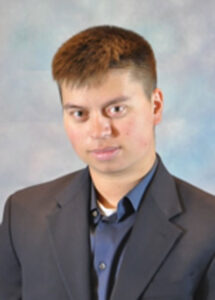
Thesis Topic
Low Cycle Fatigue Study of Medium-Entropy Alloy od Cold-Rolled and Annealed CoNiV
Thesis
The motivation of our research stems from the need to produce an improved multi-purpose, fatigue resistant, material for research and industrial use since more than 90% of all material failure is due to fatigue. Medium Entropy Alloys (MEAs) and High Entropy Alloys (HEAs) have demonstrated promise due to next-seated atoms driving distortions and large local lattice stresses. This phenomenon is crucial because this allows for a minimization of the strength-ductility trade-off, which, in turn, yields the increase of both the ductility as well as the yield strength of the material in question. As a result, we selected CoNiV as a novel fatigue candidate to study because among FCC MEAs, not only because it has the strongest room temperature yield strength known in literature thus far, but also because this system has demonstrated promise across several applications to include but not be limited to thin films, cryogenic environments, and even hydrogen embrittlement resistance. Our research seeks to investigate the fundamental mechanisms that govern the low cycle fatigue behavior of this material to investigate its viability as a multi-purpose fatigue material candidate.
Biography
Hugh Shortt was born and raised in Houston Texas where he started as a family law translator in German, Spanish, Mandarin Chinese and English from 2006-2014. In 2014, he moved to study for his bachelor’s in mechanical engineering at the New Mexico Institute of Mining and Technology where he continued working as a family law translator until he finished his Bachelors in 2018. Thereafter, he was hired by the US Navy to work as a software developer in Virtual Reality at Naval Air Systems (NAVAIR), Naval Air Warfare Center Weapons Division (NAWCWD) Point Mugu, California. This assignment was followed by a transfer to the Marine Corps to do more software development work, however, in Augmented Reality at the Naval Post Graduate School (NPS) at Monterrey California. Next, he was transferred back to Point Mugu as the primary engineer responsible for the HexH2O Pro drone, Outlaw drone and the Predator drone for target practice and overseas use. Upon completion of this post, he was transferred to another Navy base in Indiana known as Naval Surface Warfare Center (NSWC) Crane working for Naval Sea Systems Command (NAVSEA) as a battery engineer until he accepted his offer as a Ph.D. candidate at UTK in Materials Science and Engineering in August of 2020.